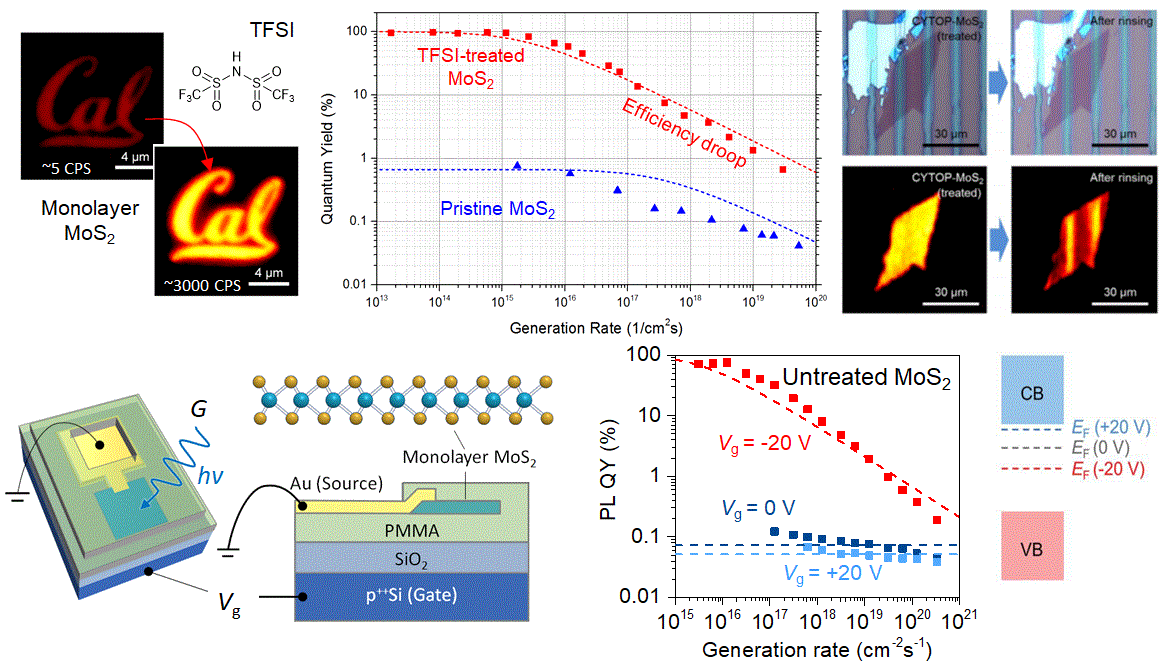DHLab
Brightening Materials
Photoluminescence quantum yield (PL QY), defined as the number of emitted photons per photogenerated electron-hole pair, is the key metric for the performance of modern optoelectronic devices as it directly dictates the maximum efficiency achievable in light-emitting diodes, lasers, and solar cells. Calibrated measurement of PL QY of these 2D semiconductors was performed as a first step in evaluating their true potential as optoelectronic materials. As an excitonic direct bandgap semiconductor in the monolayer limit, transition metal dichalcogenides show great promise for optoelectronic applications. However, as-exfoliated monolayer semiconductors, such as MoS2 and WS2, show poor PL QY (~1%). I have developed several brightening strategies. For example, the PL QY of MoS2 monolayers increases from ~1% to over 95% by chemically treating with an organic superacid: bis(trifluoromethane) sulfonimide (TFSI) (Science, 2015). The processing stability and treatment yield of TFSI treatment can be further improved by fluoropolymers (ACS Nano, 2017). Near-unity PL QY in chemically-untreated monolayers can also be achieved at room temperature by electrostatic doping (Science, 2015). This work shows that the underlying mechanism of TFSI treatment is electron counter-doping, which effectively acts as a Lewis acid.

Relevant publications:
1) Science, 364, 468–471, 2019.
2) Science, 350, 1065, 2015.
3) ACS Nano, 11, 5179-5185, 2017.
4) Nano Letters, 15, 1356, 2015.
5) Science Advances, 5, eaau4728, 2019.
6) Nature Communications, 8, 608, 2017.
7) Nano Letters, 17, 5356–5360, 2017.
8) ACS Nano, 10, 6535–6541, 2016.
9) Nano Letters, 16, 2786–2791, 2016.